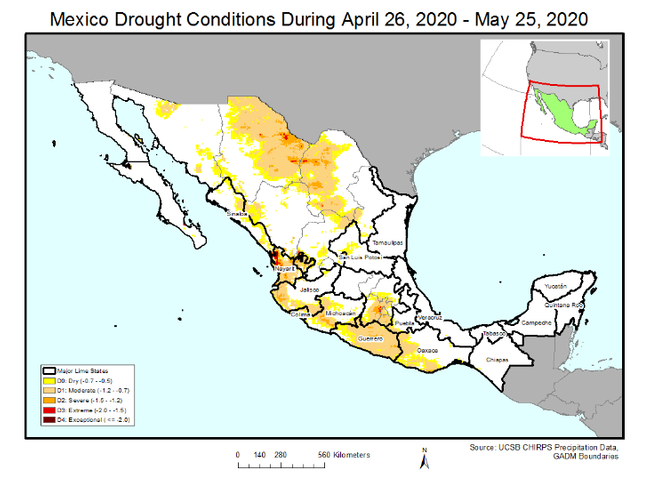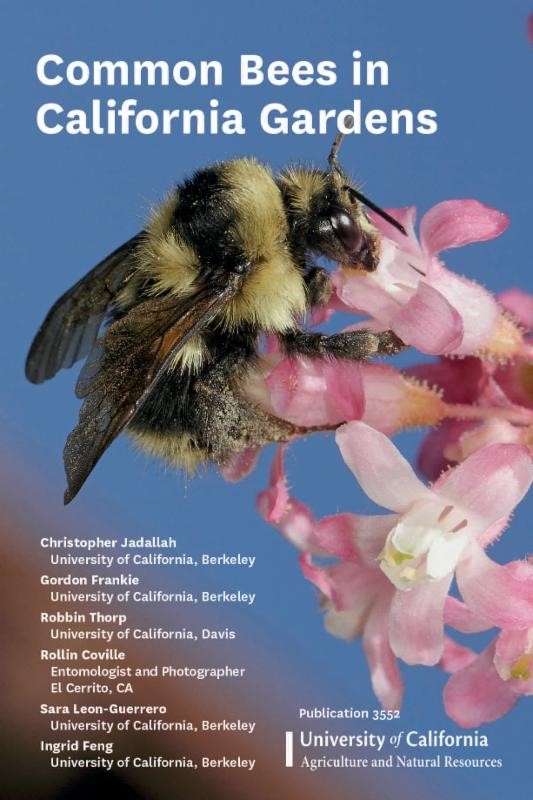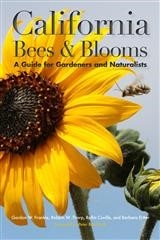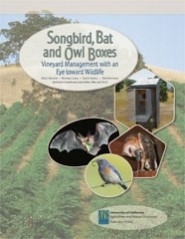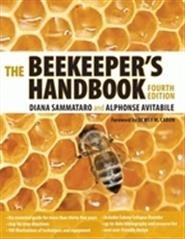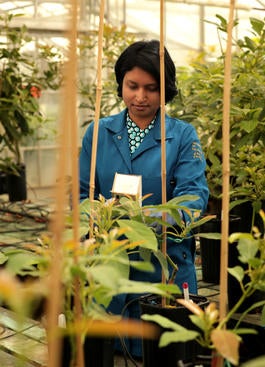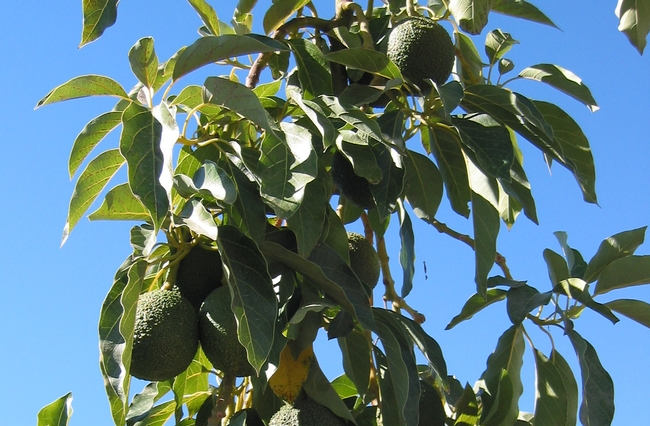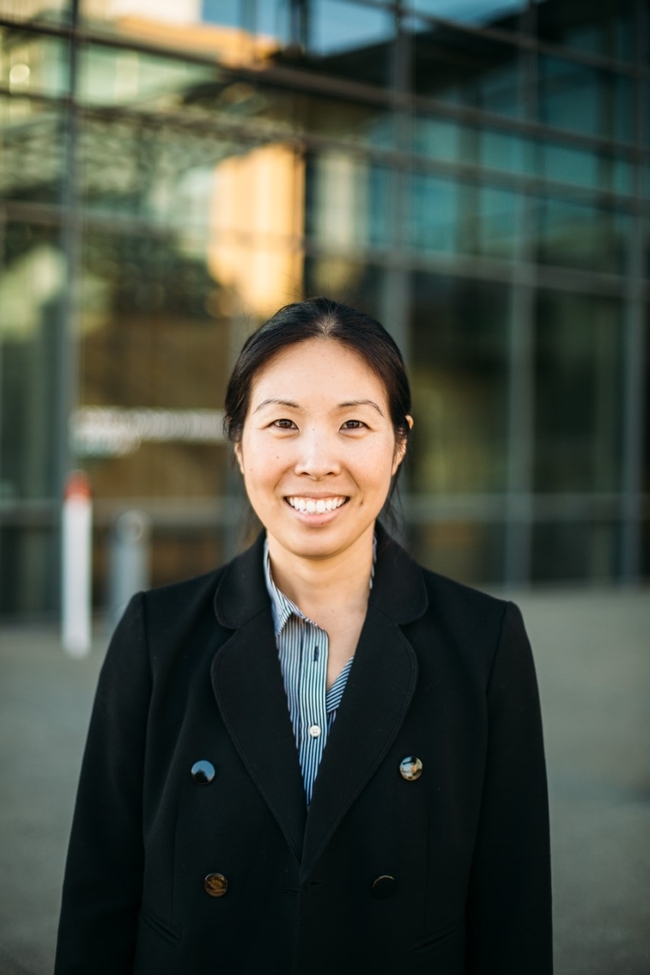- Author: Ben Faber
Floyd Zaiger a world famous fruit breeder has just passed. Luther Burbank created such creations as the Russet Burbank Potato, the Shasta daisy and the ‘Santa Rosa” plum. This was all done through traditional breeding practices. Floyd Zaiger carried the breeding process to a more intense level for fruit trees, crossing plums and apricots to get ‘Pluots' and ‘Apriums' and a range of other crosses between species – interspecifics. He worked to create low-chill cherries, such as ‘Minnie Roya', ‘Royal Lee' an ‘Riyal Crimson' that are more adapted to Southern California growing conditions than traditional cherries. He and his company Zaiger Genetics were able to create new varieties by the sheer number of crosses that are done every year, thousands. Part of the success has been the use of moveable containers that allow them to create environments that are more conducive to crosses that would not normally occur because of different flowering times. The Zaiger family continues with the family business and we can expect to see many more new Zaiger fruits, nuts and rootstocks in the future.
New selections currently under development include:
- varieties with low winter chilling requirements,
- dwarf and semi-dwarf varieties,
- dwarfing rootstocks and extremely vigorous semi-dwarfing rootstocks,
- nematode and disease-resistant rootstocks,
- extra-early and extra-late-ripening varieties,
- low acid/high flavor white-fleshed peaches and nectarines,
- low acid/high flavor experimental varieties,
- Asian and European pear hybrids,
- apples, red pears, canning clingstone peaches,
You can read Floyd Zaiger's obituary below:
https://www.modbee.com/news/business/agriculture/article243589442.html
And we do have UC breeders of all manner of fruits – strawberries, walnuts, pistachios, citrus amongst many other crops. A couple of avocado breeders are Mary Lu Arpaia and Patty Manoslava
https://ucanr.edu/blogs/blogcore/postdetail.cfm?postnum=42726
Floyd Zaiger, pioneer of modern fruit crosses, gives out samples. The Sacramento Bee
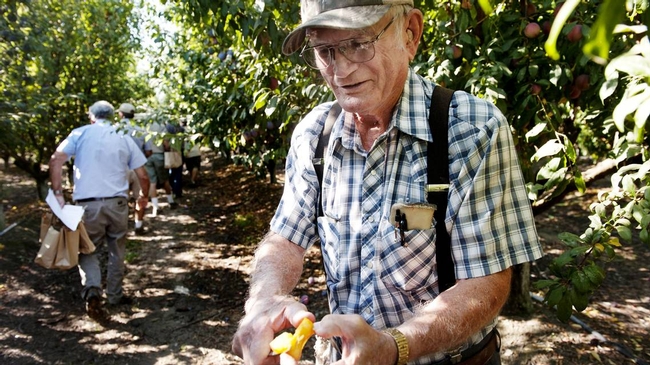
- Author: Ben Faber
UC-ANR PUBLICATIONS has some helpful guides for protecting, identifying and helping pollinators thrive. Check'em out
|
Nearly 1600 species of native bees can be found in California's rich ecosystems; this colorful pocket-sized card set will help you identify 24 of the most common bees found in urban gardens and landscapes. Included for each featured bee are color photographs, a general description of appearance, the distribution and richness, flight season, nesting habits, floral hosts, and how each transports pollen. 3552 $15.00 $11.25- Through June 30 |
|
California is home to over 1600 species of undomesticated bees—most of them native—that populate and pollinate our gardens, fields, and urban green spaces. In this absorbing guidebook, bee and botany experts from UC Berkeley's Urban Bee Lab introduce us to this diverse population, holding a magnifying glass up to the twenty-two most common genera. 3546 $28.00 $18.00--Through June 30 |
|
Bats are important pollinators and you can turn your vineyard, farm, or garden into a wildlife refuge and control pest activity naturally with this handy guide. Although written with vineyard managers in mind, anyone interested in learning about nest boxes will find this guide useful. Includes patterns for building your own boxes and advice on where to place your boxes for best results. 21636 $15.00 $11.25- Through June 30 |
|
This handbook from Cornell University Press provides step-by-step directions accompanied by more than 100 illustrations for setting up an apiary, handling bees, and working throughout the season to maintain a healthy colony of bees and a generous supply of honey. This book explains the various colony care options and techniques, noting advantages and disadvantages, so that beekeepers can make the best choices for their own hives. Reviewed and approved by UC experts for inclusion in our catalog, we're pleased to make this resource available. 3543 $30.00 |
There's more about how to create a haven for bees and other pollinators in these
free downloads:
How to Attract and Maintain Pollinators in Your Garden
About three-quarters of all flowering plants rely on insects or birds for pollination, and that includes one-third of all crop plants. Learn how to create a landscape that is welcoming for bees and many other pollinators.
California Bee-Friendly Garden Recipes
Tips on how to make your garden more bee-friendly, whether you have a cottage garden or vegetable garden, or even a drought-tolerant native plant garden.
Bees in the Neighborhood: Best Practices for Urban Beekeepers
Learn beekeeping basics as they apply to urban environments as well as how to keep your bees good neighbors. Good for bees, good for beekeepers, and good for neighbors.
|
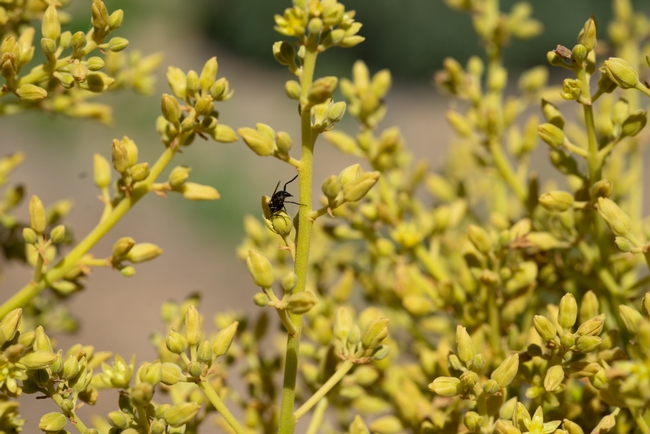
- Author: Ben Faber
UC Riverside has entered into a $2.25 million partnership with Spain-based Eurosemillas S.A., a global leader in the commercialization of agriculture innovations, to help the university bring to market the most promising and advanced avocado scions and rootstocks in its collection.
If successful, these varieties would meet diverse regional growing requirements, exhibit better post-harvest characteristics, increase yields, provide resistance against disease, and expand consumer market diversity.
“Eurosemillas has successfully commercialized citrus varieties developed at UC Riverside in the past. They have the global network and expertise to do the same with the next generation of avocados,” said Brian Suh, director of technology commercialization in the Office of Technology Partnerships at UC Riverside, who worked with a team on this initiative for the past four years.
Eurosemillas will obtain access to a small subset of the overall university avocado variety and rootstock collection for evaluation and testing on various continents to see if they perform as well as they do in California. At the same time, they will forge partnerships for commercialization that could lead to global market penetration of some of these selections.
“After 31 years of working with UC on many other crops, we are delighted to partner with UCR again in a new product like avocado,” said Javier Cano Pecci, Chief Executive and Development Officer of Eurosemillas. “The avocado market is growing and is currently dominated by the Hass variety. This is a great opportunity for growers, marketers, retailers, and consumers to have options and diversify to include better avocado varieties and rootstocks adapted to their regions.”
UC Riverside's 70-year old avocado breeding programs house one of the most elite germplasm collections of scion and rootstock breeding material in the world. The University of California has partnered with California avocado growers since the inception of the industry a century ago and has had several plant breeders developing new varieties and rootstocks for the industry.
Bob Bergh headed the variety improvement program for nearly 40 years, which released among other varieties, the ‘Lamb Hass' and ‘GEM.' This program is under the leadership of Mary Lu Arpaia, an extension horticulturist. The goal of the variety breeding program is to develop trees with high eating and market quality while increasing yield efficiency.
Arpaia said for the California industry to remain viable, growers must have new varieties that yield more than Hass, are more tolerant to environmental stress, and can be produced reliably under high-density planting systems.
“I am delighted by this partnership with Eurosemillas since it will help UC take this vision for the future toward reality,” Arpaia said.
The variety improvement program has four selections being readied for release that can augment the ‘Hass' variety in terms of seasonality and have potential for expanded environmental adaptation within California.
The rootstock breeding program was started in the 1940s by George Zentmyer and is currently directed by Patricia Manosalva, an assistant professor of plant pathology at UCR. The UCR Rootstock Breeding Program is one of the few well-recognized rootstock breeding programs worldwide and has been historically funded by the California industry through the California Avocado Commission. The main goal of the rootstock program is to develop and release the next generation of rootstocks that meet the most pressing needs of growers using traditional breeding complemented with genomic-assisted breeding approaches.
The program is selecting rootstocks that can resist Phytophthora root rot, the most common avocado disease worldwide, as well as salinity, drought, and heat, all of which are expected to become worse as the climate warms. In collaboration with the California Avocado Commission, five UC Riverside advanced rootstocks exhibiting resistance to these major challenges are being evaluated by growers throughout California.
“This partnership with Eurosemillas will allow us to test our five advanced rootstocks in combination with ‘Hass' and local scions in other countries to determine their potential outside California,” Manosalva said.
Peggy Mauk, director of agricultural operations and cooperative extension horticulture specialist, has been active in avocado research and extension for more than two decades. Over the past 25 years, avocado production in California and worldwide has been challenged by declining water quality. Avocado is the most salinity sensitive tree crop and ‘Hass' is very susceptible to damage caused by salts. She initiated a program to find rootstocks tolerant to saline water.
“Our UCR team in partnership with Eurosemillas is focused on finding rootstock/scion combinations that increase salinity tolerance,” Mauk said.
Over the last 30 years, the avocado market has increased 2.5-fold and per capita consumption has quadrupled, generating interest in avocado production in many other countries, Manosalva said. But diseases, climate change, and the worldwide market's dependence on the Hass variety threaten this burgeoning market.
“The funding from Eurosemillas will allow UC Riverside to maintain the plant material and support and complement the current California Avocado Commission funding of the avocado scion and rootstock breeding programs, respectively, which have significant value given their uniqueness,” said Kathryn Uhrich, dean of UC Riverside's College of Natural and Agricultural Sciences.
For more information on this avocado program contact Joyce Patrona: joyce.patrona@ucr.edu
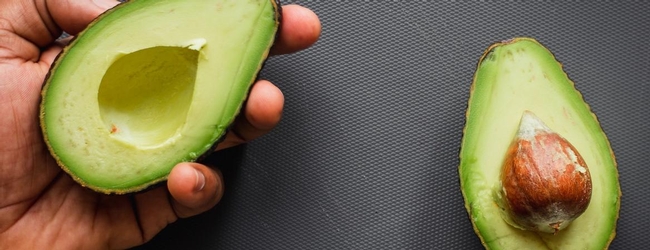
- Author: Ben Faber
The Romans were trying to stamp out and regulate adulterated olive oil 2,000 years ago. And now avocado oil has become profitable enough for it to become the focus of manipulation. Is that avocado juice what it is purported to be? Here's an interesting recent post from the UC ANR Food Blog
https://ucanr.edu/blogs/blogcore/postdetail.cfm?postnum=42759
- Author: Diane Nelson
Consumer demand is rising for all things avocado, including oil made from the fruit. Avocado oil is a great source of vitamins, minerals and the type of fats associated with reducing the risk of heart disease, stroke and diabetes. But according to new research from food science experts at the University of California, Davis, the vast majority of avocado oil sold in the U.S. is of poor quality, mislabeled or adulterated with other oils.
In the country's first extensive study of commercial avocado oil quality and purity, UC Davis researchers report that at least 82% of test samples were either stale before expiration date or mixed with other oils. In three cases, bottles labeled as “pure” or “extra virgin” avocado oil contained near 100 percent soybean oil, an oil commonly used in processed foods that's much less expensive to produce.
“I was surprised some of the samples didn't contain any avocado oil,” said Selina Wang, UC Cooperative Extension specialist in the UC Davis Department of Food Science and Technology, who led the study recently published in the journal Food Control.“Most people who buy avocado oil are interested in the health benefits, as well as the mild, fresh flavor, and are willing to pay more for the product. But because there are no standards to determine if an avocado oil is of the quality and purity advertised, no one is regulating false or misleading labels. These findings highlight the urgent need for standards to protect consumers and establish a level playing field to support the continuing growth of the avocado oil industry.”Testing domestic and imported brands
Wang and Hilary Green, a Ph.D. candidate in Wang's lab, analyzed various chemical parameters of 22 domestic and imported avocado oil samples, which included all the brands they could find in local stores and online. Wang and Green received a $25,000 grant from Dipasa USA, part of the Dipasa Group, a sesame-seed and avocado-oil processor and supplier based in Mexico.
“In addition to testing commercial brands, we also bought avocados and extracted our own oil in the lab, so we would know, chemically, what pure avocado oil looks like,” Wang said.
Test samples included oils of various prices, some labeled extra virgin or refined. Virgin oil is supposed to be extracted from fresh fruit using only mechanical means, and refined oil is processed with heat or chemicals to remove any flaws.
Fifteen of the samples were oxidized before the expiration date. Oil loses its flavor and health benefits when it oxidizes, which happens over time and when exposed to too much light, heat or air. Six samples were mixed with large amounts of other oils, including sunflower, safflower and soybean oil.
Only two brands produced samples that were pure and non-oxidized. Those were Chosen Foods and Marianne's Avocado Oil, both refined avocado oils made in Mexico. Among the virgin grades, CalPure produced in California was pure and fresher than the other samples in the same grade.
A push for standards
Ensuring quality is important for consumers, retailers, producers and people throughout the avocado oil industry. Retailers want to sell quality products, shoppers want to get their money's worth and honest producers want to keep fraudulent and low-quality oil out of the marketplace.
But since avocado oil is relatively new on the scene, the Food and Drug Administration (FDA) has not yet adopted “standards of identity,” which are basic food standards designed to protect consumers from being cheated by inferior products or confused by misleading labels. Over the last 80 years, the FDA has issued standards of identity for hundreds of products, like whiskey, chocolate, juices and mayonnaise. Without standards, the FDA has no means to regulate avocado oil quality and authenticity.
Avocado oil isn't the only product without enforceable standards. Honey, spices and ground coffee are other common examples. Foods that fetch a higher price are especially ripe for manipulating, especially when adulterations can be too subtle to detect outside a lab.
Wang is working to develop faster, better and cheaper chemical methods to detect adulteration so bulk buyers can test avocado oil before selling it. She is also evaluating more samples, performing shelf-life studies to see how time and storage affects quality, and encouraging FDA officials to establish reasonable standards for avocado oil.
Wang has experience collaborating with industry and the FDA. Ten years ago, she analyzed the quality and purity of extra virgin olive oil and discovered that most of what was being sold in the U.S. was actually a much lower grade. Her research sparked a cascade of responses that led California to establish one of the world's most stringent standards for different grades of olive oil. The FDA is working with importers and domestic producers to develop standards of identity for olive oil.
“Consumers seeking the health benefits of avocado oil deserve to get what they think they are buying,” Wang said. “Working together with the industry, we can establish standards and make sure customers are getting high-quality, authentic avocado oil and the companies are competing on a level playing field.”
Tips for consumers
- The flavor of virgin avocado oil can differ by varieties and region. In general, authentic, fresh, virgin avocado oil tastes grassy, buttery and a little bit like mushrooms.
- Virgin avocado oil should be green in color, whereas refined avocado oil is light yellow and almost clear due to pigments removed during refining.
- Even good oil becomes rancid with time. It's important to purchase a reasonable size that can be finished before the oil oxidizes. Store the oil away from light and heat. A cool, dark cabinet is a good choice, rather than next to the stove.
- How do you know if the oil is rancid? It starts to smell stale, sort of like play dough.
- When possible, choose an oil that's closest to the harvest/production time to ensure maximum freshness. The “best before date” is not always a reliable indicator of quality.
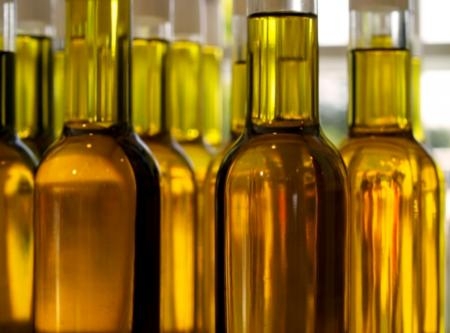
- Author: Ben Faber
USDA Report on Mexican Citrus Industry
This is a recent USDA report on the state of the Mexican citrus industry. It's interesting to hear how this industry is doing faced with HLB. And Drought.
Significant and ongoing drought conditions in many citrus-producing states have resulted in a reduction in all citrus production, compared to the previous report, with orange production forecast to fall forty-five percent. As a result of low orange supplies for processing, fresh concentrated orange juice exports to the United States are expected to fall to nearly half of the MY 2018/19 export level. COVID-19 sanitary measures are affecting domestic consumption of citrus fruit and juice, as many hotels and restaurants have been closed since mid-March. Full consumption effects will depend on the length of ‘stay at home' orders and the long term effect on the hotel and restaurant industries.
Drought and high temperatures
Orange production is estimated at 2,53 million tons for 2019/2020. That is 45% less than previous estimates. It is also the lowest expected harvest since the early 90s. This estimate is based on grower data and discussions with sector representatives.
The persistent drought and high temperatures have had a more drastic effect on orange production that other citrus. That is because many of the orange groves are older and need more energy to produce fruit. Many small farmers also lack irrigation technology. They practice bad pest control too, which compounds cultivation issues. Large-scale growers mostly have several irrigation mechanisms. They use fertilizers and apply other mitigating measures too. These include leaving weeds growing around the tree trunks. This retains moisture.
There have been intense temperatures and lack of rain throughout the growing season. That has resulted in a widespread decline in the orange's quality. Most fruit in the orange-growing region are smaller and of lower quality. In the state of Veracruz, October and November 2019 were the hottest months.
It usually rains throughout the growing season. However, this season, it was concentrated in two months. That resulted in a shorter growing season. The last flowering cycle indicates the harvest's end. This was between December and March. In Veracruz, oranges can usually be harvested until June.
Mexico is typically the world's second-largest producer of limes, and the fruit is the second-largest planted citrus crop in Mexico after oranges. While drought has affected lemon and lime production throughout the country, they have not been as affected as oranges. This can be attributed to newer plants and more widely available irrigation infrastructure. Persian lime trees in Veracruz are newer and more efficient, with 12 blooms, or harvests per year.The Post planted area for all limes and lemons in MY 2019/20 is forecast at 208,000 hectares, similar to previous MY; however, harvested area is expected to decrease eight percent due drought and high temperatures that caused some producers to abandon harvest or replant trees.
Italian lemons (Eureka) are grown in the states of Tamaulipas, Yucatan, San Luis Potosi, Colima, and Nuevo Leon. According to producers, there are currently attempts to grow the Italian lemon in the state of Veracruz with very good results. According to official sources, for MY 2018/19, production of Italian lemons was 131,469 MT on about 9,264 hectares. Sources indicate that lemon supplies for MY 209/20 are tight, and prices are high.
HLB
As with other citrus-producing countries, Mexico is facing issues with citrus greening, or Huanglongbing (HLB). The disease, caused by bacteria introduced by psyllids, makes citrus trees produce misshapen, partially green fruit (taste is typically not affected, but has no marketability for fresh consumption). Mexico's first detection was in 2009, and since then, the National Service of Agricultural Food Safety and Quality (SENASICA) has implemented a monitoring program for the disease. HLB has been detected throughout Mexico in citrus production areas. Producing states, including Veracruz, Tamaulipas, San Luis Potosi, and Nuevo Leon, have had HLB detections. In 2019, Baja California had HLB positive detections along the California/Mexico border region
On the map, dark outlined areas are where citrus is grown and yellow shaded is drought area.
